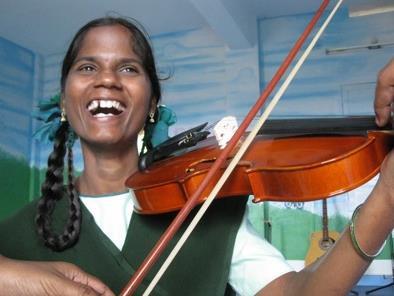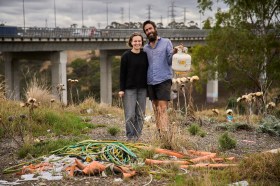What is this smile worth?
A Harvard economist, a creative industries scholar and social work academic are on the job. All three are in the business of finding new ways to measure the impact of non-commercial activities on communities. Queensland Performing Arts Centre (QPAC) brought them together this week for a panel on how arts organisations can measure and articulate the public value of what they do.
QPAC Scholar in Residence Dr Judith McLean, Adjunct Professor in Creative Industries at QUT, noted our society’s relationship–‘some would call it a fetish’–with measurement had placed pressure on any activity that did not measure success in dollars.The health industry measuring throughput rather than the quality of doctor-patient relationships was another example.
She said the arts and cultural industries are spread out and disaggregated and simply collapsing them into a broad figure – such as the often quoted claim that the cultural industries represent $48.6 billion of GDP – was unhelpful. ‘Unreliable quantitative multiples were just as problematic as simplistic qualitative measures.’
MacLean, who has been working with QPAC on a process to define public value, said the organisation had developed four foci for measurement: program choices; audience experience; learning and sustainability, ‘a coalition of practices that enable growth and vitality’. She said public value could be measured at every part of the value chain. ‘It’s up to us to find measures, be they narrative measures or numerical measures, that are persuasive.’
MacLean said the acquittal process should be rethought, moving from being a justification to grant agencies to a means of really examining community value. ‘Acquittals are always rushed, overlooked or done badly. We don’t move beyond, “Did we spend the money we said we were going to spend?”’
Harvard economist Professor Mark H Moore John F Kennedy School, who is Faculty Chair of the Hauser Center for Nonprofit Organisations, said a clue to the way arts organisations needed to approach the issue of accounting value was in the different meanings of the word ‘account’
‘One meaning of the word “account” is to tell a story. In telling that story I try to inspire…another meaning is in some numbers, the costs of a set of effects. I think what’s challenging about public value accounting is in some ways to get those two things lined up together. There has to be a story that captures what we had in mind and then a rigourous demonstration of what we actually were able to do.’
He said public value accounting needed to function at multiple levels: the technical level of how to measure value; the managerial level of using value to guide decisions: the critical level of how to speak to politicians wanting to see economic development and community impact and the philosophical questions around meeting the vision for an outcome. These levels then had to be linked up with the kind of society we want to be.
Social work academic Dr Geoff Woolcock chairs the Australian Community Indicators Network (ACIN), which measures community wellbeing. He said the philosophical question of what we want an activity to achieve is too often missing from the conversation. ‘We still let our measurements define our value discussion rather than the other way round.’
Moore said people often complained that the value gained by arts endeavours was intangible but there was nothing intangible about important issues such as the quality of relationships. ‘This is an ordinary completely reliable human experience to describe that as an intangible strikes me as bizarre. Even the private sector now spends a huge amount of time measuring its relationship with its customers.’
Similarly positive mood in a community or a society’s democratic functioning could be measured.
‘The experience of producing and consuming art might make us better citizen as people who are good neighbours. One of the pieces of evidence that is becoming clear from throughout the world is that you can have democratic institutions but not a democratic polity and that doesn’t work out of very well. One of the things to consider is how the producing and consuming of art would create a civil and political culture in which one might like to live.’
He said a fact of life was that we were increasingly interdependent due to the complexity of modern life –think how many people are between the production of the food you eat and your breakfast table –but feel less integrated into communities. Arts and culture have a key role in increasing awareness of our interdependence and communal experience.
Woolcock added that a sense of community was essential for wellbeing.‘There is plenty of evidence that we are still yearning more than ever for that tribal experience. There are plenty of reasons to be optimistic. Arts and culture is absolutely pivotal and at the heart of that.’
MacLean identified emotional learning and transformative experience as additional outcomes that needs to be valued. ‘If we have one claim in the arts, it is that we teach empathy.’
She pointed out that neurological research had proven the improvement in creative thinking in all disciplines that occurred when we were challenged by a new way of seeing or being in the world.
‘You then have to ask, “Would it be better or worse for a society to have large numbers of people have that experience?”’ added Moore.
Assuming the answer is ‘much better’, the challenge for the arts is to make that value visible to governments, corporate partners and the public.





